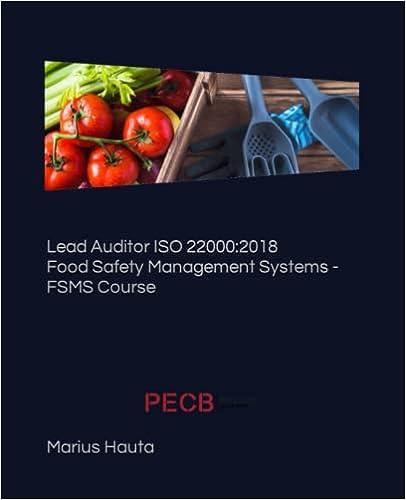Question
Harrison Wolfe operates a residential landscaping business in an affluent suburb of Atlanta. In an effort to provide quality service, he has concentrated solely on
| Harrison Wolfe operates a residential landscaping business in an affluent suburb of Atlanta. In an effort to provide quality service, he has concentrated solely on the design and installation of upscale landscaping plans (e.g., trees, shrubs, fountains, and lighting). With his clients continually requesting additional services, Wolfe recently expanded into lawn maintenance, including fertilization. |
| The following data relate to his first years experience with 55 fertilization clients. Each client required six applications throughout the year and was billed $40.00 per application. |
| Two applications involved Type I fertilizer, which contains a special ingredient for weed control. The remaining four applications involved Type II fertilizer. | |
| Wolfe purchased 5,600 pounds of Type I fertilizer at $0.59 per pound and 10,600 pounds of Type II fertilizer at $0.46 per pound. Actual usage amounted to 3,800 pounds of Type I and 8,100 pounds of Type II. | |
| A new, part-time employee was hired to spread the fertilizer. Wolfe had to pay premium wages of $12.10 per hour because of a very tight labor market; the employee logged a total of 177 hours at client residences. | |
| Based on previous knowledge of the operation, articles in trade journals, and conversations with other landscapers, Wolfe established the following standards: |
| Typical hourly wage rate of landscape personnel: $9.60 |
| Labor time per application: 40 minutes |
| Fertilizer purchase price per pound: Type I, $0.56; Type II, $0.48 |
| Fertilizer usage: 46 pounds per application |
| Unfortunately, Wolfe's new lawn fertilization service did not go as smoothly as planned, with customer complaints being much higher than expected. |
| Required: |
| 1. | Compute Wolfe's direct-material variances for each type of fertilizer. (Indicate the effect of each variance by selecting "Favorable" or "Unfavorable". Select "None" and enter "0" for no effect (i.e., zero variance). Round your answers to 2 decimal place.) |
| 2. | Compute the direct-labor variances. (Indicate the effect of each variance by selecting "Favorable" or "Unfavorable". Select "None" and enter "0" for no effect (i.e., zero variance). Do not round intermediate calculations and round your final answers to 2 decimal place.) |
| 3-a. | Compute the actual cost of the client applications. (Note: Exclude any fertilizer in inventory, as remaining fertilizer can be used next year.) (Round your answer to 2 decimal place.) |
| 3-b. | Calculate the profit or loss of Wolfe's new lawn fertilization service. (Round your answer to 2 decimal place.) |
| 4. | On the basis of the variances that you computed in parts (1) and (2) was the new service a success from an overall cost-control perspective? (Round your answer to 2 decimal place.) |
| 5. | Should the fertilizer service be continued next year? |
|
Step by Step Solution
There are 3 Steps involved in it
Step: 1

Get Instant Access to Expert-Tailored Solutions
See step-by-step solutions with expert insights and AI powered tools for academic success
Step: 2

Step: 3

Ace Your Homework with AI
Get the answers you need in no time with our AI-driven, step-by-step assistance
Get Started


